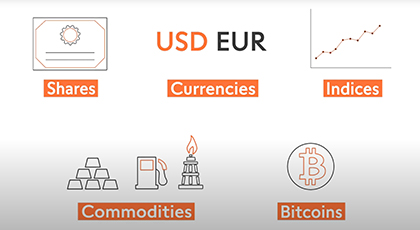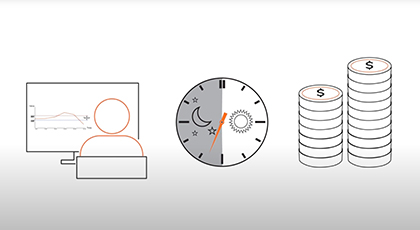2.1 What is a CFD
Familiarize yourself with Contracts For Difference by watching this video. Learn how to participate on the market by trading CFDs, which are based on the price movement of underlying assets, such as shares, currencies, indices, commodities and even bitcoins.
Complete this course
Script
Contracts for Difference, or CFDs, are a way to participate in the market based on the price movements of so-called underlying assets such as commodities and stock indices. Simply stated, you open a position and close it again when the price has moved, making a profit or loss compared to the opening price. For example, imagine that you believe that the Standard and Poor’s stock index, called the S and P 500, will soon rise. so you purchase contracts at 2,000 US dollars each. An American company then publishes strong results, and the price of the index rises. Since the CFDs rise in parallel with the price of the underlying asset, the value of your CFDs rises too. You might choose to close your position again at 2’020 per CFD, earning 20 US dollars per contract. Note that the price could also have fallen to 1’980, costing you 20 US Dollars per contract. CFDs are offered for many different kinds of underlying assets. While shares are the most common, currencies, indices and commodities as well as exotic areas such as bitcoins can be traded. Because CFDs are linked to their underlying asset, they are linked to the price movements of that asset. Similarly, in the case of contracts based on stock indices, traders also receive or pay corporate activities such as dividends. In fact, CFDs have the advantages of the asset they reproduce, but they are cheaper to start trading because leverage is allowed. In addition, they have the flexibility of forex trading, such as costs built into the spread and no fixed lot sizes. Any opinion on the markets can be an opportunity to trade because you can open both long and short positions; in other words, you can both buy or sell CFDs to open a position.



